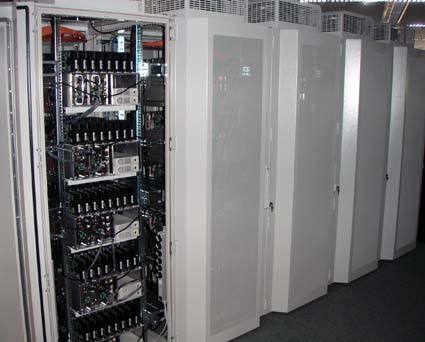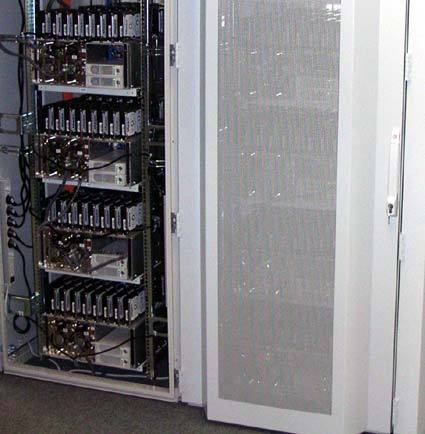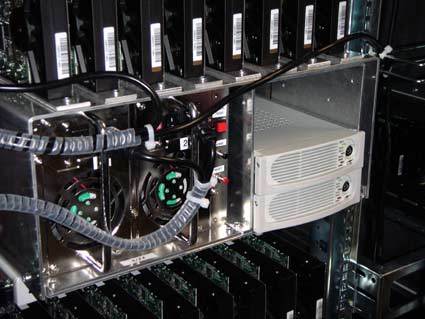Hard Drives Instead of Tapes? 70 TB Backup RAID at the University of Tübingen
System Construction: Backup RAID With Standard Computers
In the end, Dr. Koch of Computertechnik AG won the contract to build the RAID backup system. The University of Tübingen specified that it intended to use the backup system for five years - a time period that modern hard drives should be up to, if the operating conditions are right. SCSI models will almost always last that long in constant operation. Dr. Koch assumes, though, that only a modest number of the IDE drives will shuffle off this mortal coil in the next five years because of the simple fact that backups are mostly done at night and thus, don't really constitute constant operation. The number of recoveries are generally relatively low.
Building this kind of backup system is basically very simple: you just take a standard entry-level server, such as the dual-Athlon MP, and add modern components and three large-caliber IDE-RAID controllers per computer, such as the eight-channel IDE RAID controllers from the American manufacturer 3Ware (model 7500-8). There were two reasons not to use twelve-channel controllers: first of all, eight hard drives were enough to max out the bandwidth of the 64-bit PCI interface at 33 MHz (266 MB/s); second of all, it would have been on nigh to impossible to install and wire 36 hard drives - 24 was doable, though.
Dr. Koch has designed some open 19" slide-in units to accommodate the individual system modules, or the nodes. These nodes consist of two layers: on top, you have three rows of eight hard drives each; below, you have the actual platform based on the dual-Athlon motherboard - an S2460 from Tyan with 1 GB ECC RAM and an operating system installation on a separate RAID 1. Two redundant power supplies with powerful USP prevent any faults from occurring during the constant operation.
Get Tom's Hardware's best news and in-depth reviews, straight to your inbox.
Current page: System Construction: Backup RAID With Standard Computers
Prev Page Capacity Vs. Price Next Page The Hard Drives: 576 X 160 GB From Maxtor
Patrick Schmid was the editor-in-chief for Tom's Hardware from 2005 to 2006. He wrote numerous articles on a wide range of hardware topics, including storage, CPUs, and system builds.


